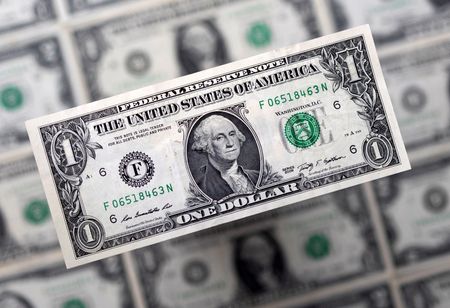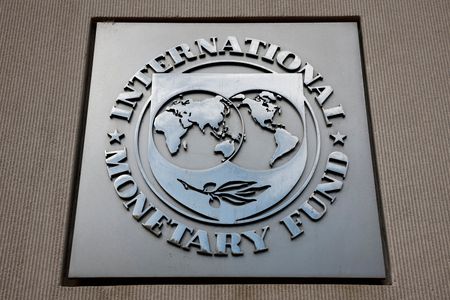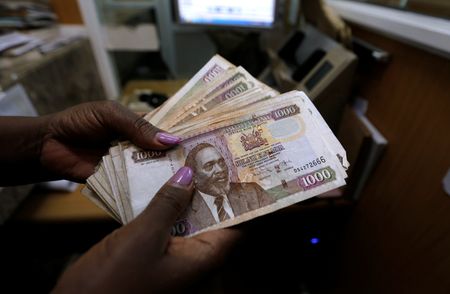By Ankur Banerjee and Medha Singh
TOKYO (Reuters) – The U.S. dollar lost its footing against major peers on Thursday ahead of retail sales later in the day that could offer clues on U.S. consumer strength in the face of tariff risks, while excitement over a Sino-US trade deal faded.
The greenback has given up most of its gains from Monday after the United States and China announced a 90-day pause on most of the tariffs imposed on each other’s goods since early April, easing fears of a global recession.
“Markets have exhausted the positivity from the U.S.-China trade talk,” said Benjamin Ford, strategist at Macro Hive in London.
Safe-haven currencies gained with the Japanese yen strengthening 0.6% to 145.88 per dollar after having touched a one-month low of 148.65 earlier this week. The Swiss franc firmed 0.6% to 0.8376 versus the dollar.
The euro tacked on 0.2% to $1.12.
Most Asian currencies advanced versus the dollar too, led by a surge in the South Korean won for the second day after news on Wednesday that officials from South Korea and the U.S. met last week to discuss the dollar/won exchange rate led to a bout of dollar selling.
The won surged 0.7% at 1,397.68 per dollar. The sudden lurch in the won was reminiscent of an unprecedented two-day surge in Taiwan’s currency at the start of May, which also coincided with the end of U.S.-Taiwan trade talks in Washington.
The Taiwan dollar was 0.5% stronger to the dollar on Thursday.
A Bloomberg report on Wednesday, however, said the U.S. is not negotiating for a weaker dollar as part of tariff talks, which has helped calm some of the nervousness in the markets.
The dollar index, which measures the U.S. unit against six other currencies, was 0.2% lower at 100.81, but on course to eke out a 0.4% gain for the week. Even so, the index is down nearly 7% in 2025.
U.S. President Donald Trump’s aggressive and erratic trade policies have rattled investors’ confidence in the dollar, leading to a sharp fall in U.S. assets. While stock markets have recouped April losses, the dollar remains under pressure.
A major market focus on Thursday will be U.S. retail sales data, and investors are also going to be looking out for more details on possible trade deals after the U.S.-China tariff truce.
“Hard data on US personal consumption have so far shown resilience despite weakness in consumer sentiment,” said UniCredit investment strategist Thomas Strobel in a note, adding that U.S. data later in the day will test whether this resilience continued after sweeping U.S. tariffs last month.
U.S. Treasury yields were elevated and the benchmark 10-year yield rose to a one-month top, in part due to worries over Trump’s budget package that would add trillions of dollars to the U.S. debt.
Sterling firmed 0.2% to $1.329 against the U.S. dollar after data showed the UK economy unexpectedly grew in March, giving a boost to the government and finance minister Rachel Reeves.
(Reporting by Ankur Banerjee in Tokyo and Medha Singh in Bengaluru; Editing by Edwina Gibbs and Ros Russell)









